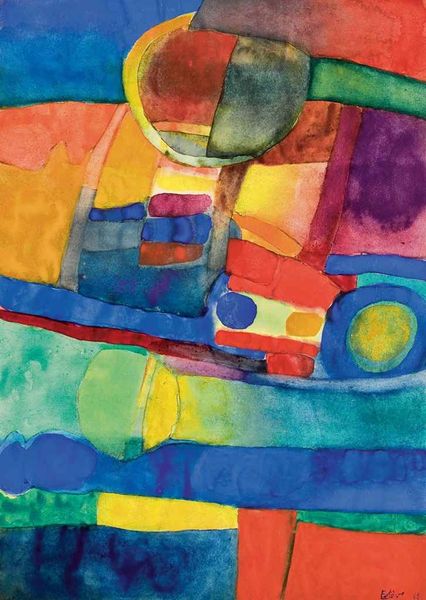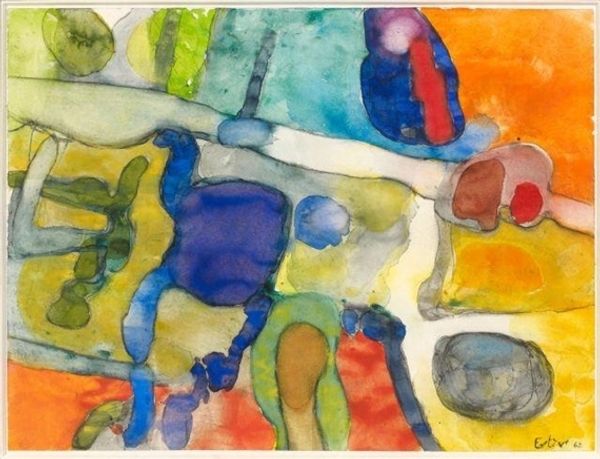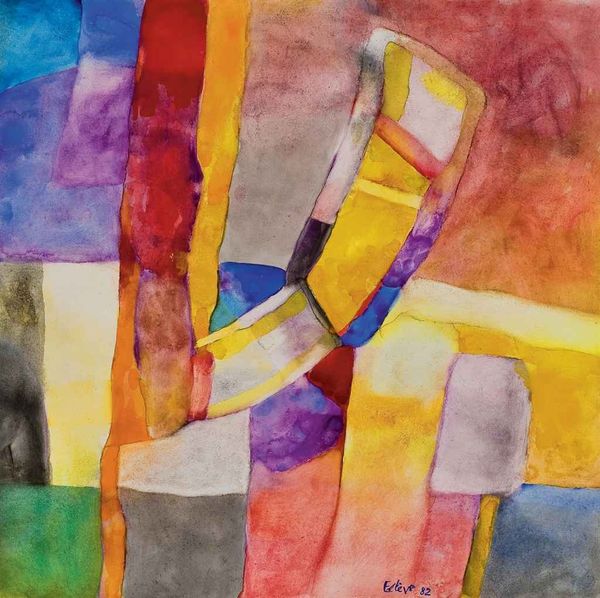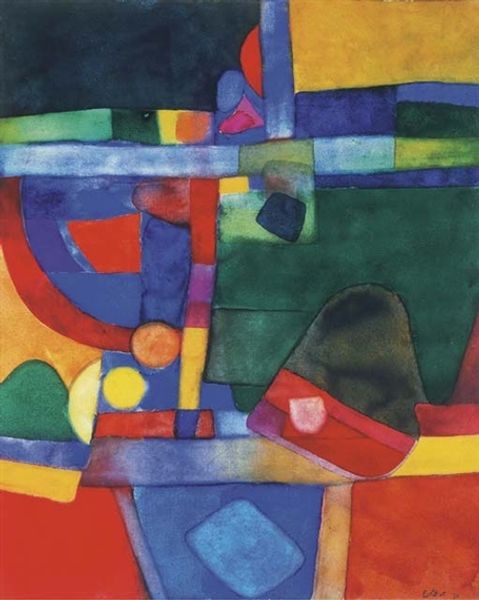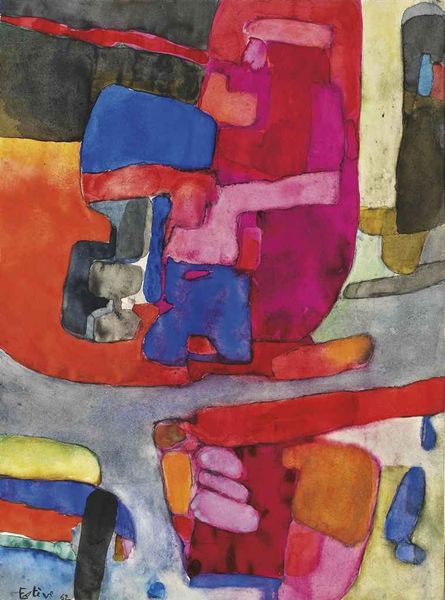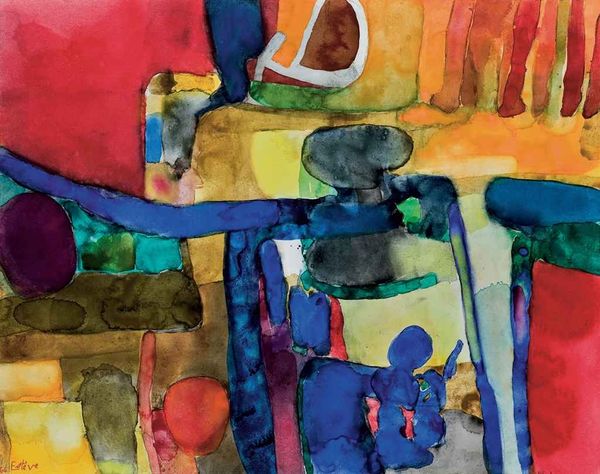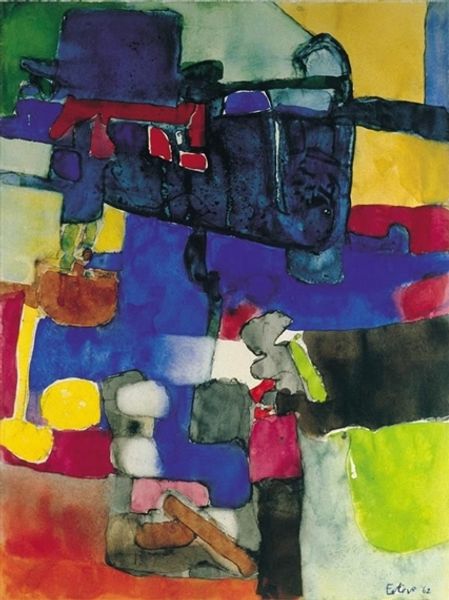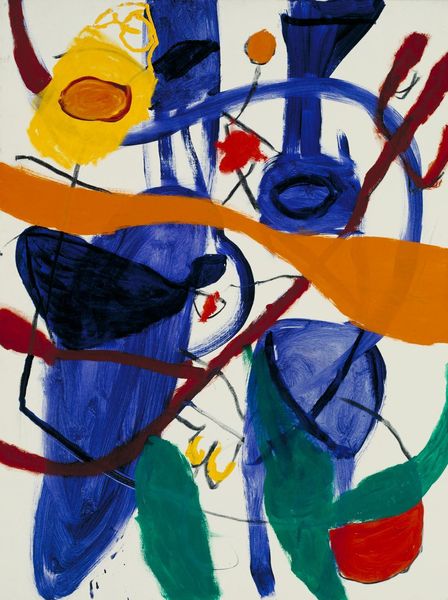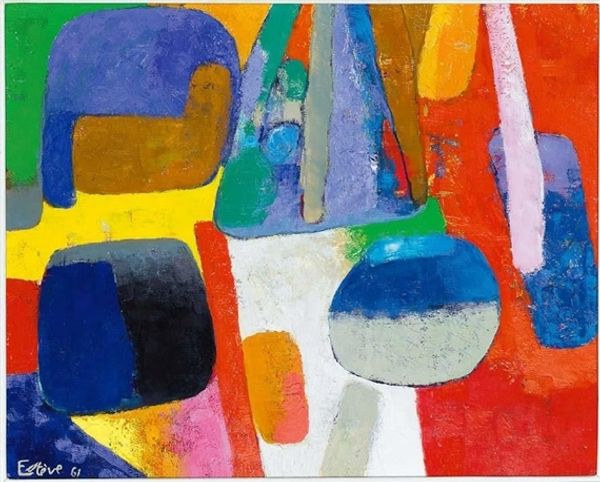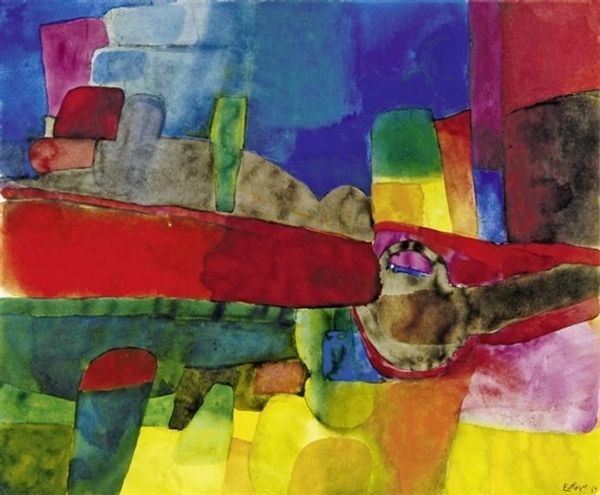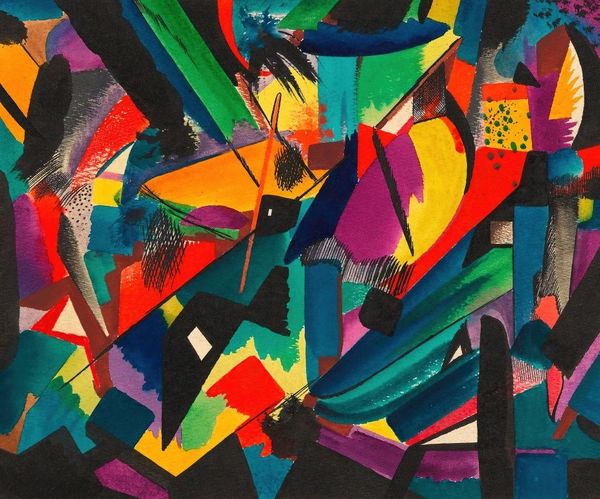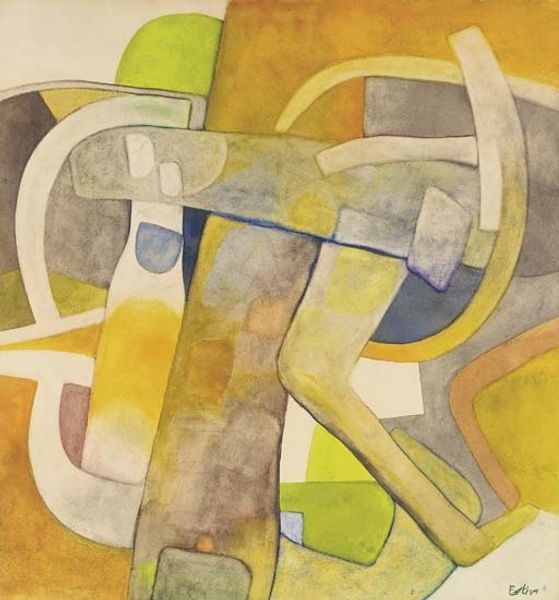
Copyright: Maurice Esteve,Fair Use
Curator: The swirling, energetic piece before us is simply titled "Untitled." Maurice Estève created it in 1961, employing watercolor to build up these vibrant layers of color. Editor: My first impression is of pure joy. The colors! The way they bleed and blend—it’s a dance of hues. And there is almost an immediate recognition, too; I feel like these organic shapes reach something essential and primitive inside me. Curator: Indeed, there is a remarkable Fauvist sensibility here, though filtered through the lens of Abstract Expressionism, a powerful artistic movement at mid-century. One might be tempted to find some organic objects—fruits, leaves, flowers—in these sinuous forms. Yet, that would distract us from the artist's overall interest in a pure and joyful study of abstraction. Editor: These abstract shapes suggest something more profound, something totemic. These blobs of earthy greens and browns bring to mind Neolithic cave paintings; that looping lavender ribbon makes me think of some intergenerational pattern repeated across countless artworks, a sort of collective dream. Curator: Estève came of age in Paris during the interwar years, absorbing cubism and expressionism while navigating the rise of totalitarianism and eventually Nazi occupation. Even after World War II and its unspeakable traumas, he felt acutely that abstraction best articulated the paradoxes of his epoch: both utopian aspiration and disillusionment. Editor: Which explains perhaps its enduring appeal. When a symbolic language is emptied of specific narratives, we can imbue forms like these with new individual meanings—responding viscerally as well as rationally. A painting can carry the unnamable traumas of war even as it communicates sheer joie de vivre. Curator: Certainly. Art and the artists are deeply shaped by historical forces. Estève's oeuvre speaks both to the utopian promises of the early 20th century avant-garde and to the postwar embrace of the image as an affective technology. Editor: Well, I leave with that sense of simultaneous freedom and historical weight, seeing how these ostensibly playful shapes evoke resonances in our memories.
Comments
No comments
Be the first to comment and join the conversation on the ultimate creative platform.
